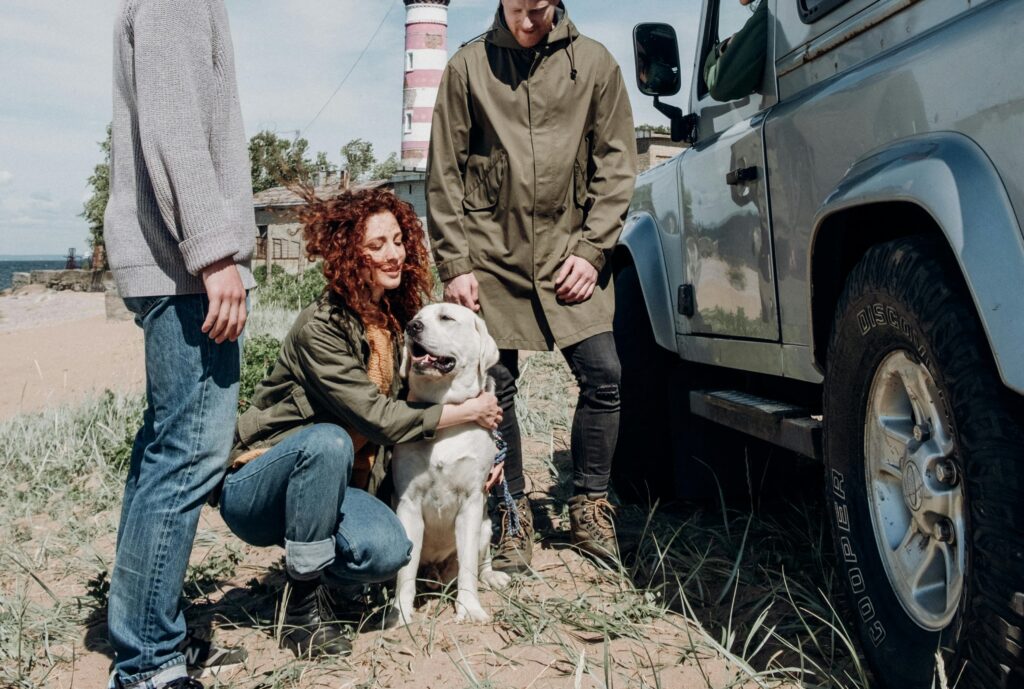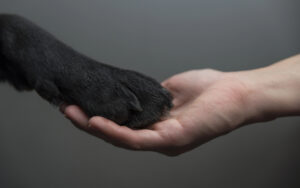
Traveling Safely With Your Pet
Traveling with your pet can be a great experience, but their safety should always come first. Whether you’re heading to the vet or taking a long road trip, keeping your pet comfortable and secure is important for a smooth and stress-free journey. With a little planning and a few simple steps, you can make traveling safe and enjoyable for everyone.

Boarding Clients!*Discount does not apply during holiday/peak rate periods.


Pet Safety in the Car Shouldn’t Be Overlooked
Pets who travel unrestrained in vehicles pose risks to themselves, the driver, and other passengers. An unsecured pet can become a distraction or even a projectile during a sudden stop or accident. Protecting your pet in the car is as important as buckling up for yourself.
- Unrestrained pets can cause distractions that lead to accidents.
- In a crash, loose pets can be thrown forward, leading to severe injuries or worse.
- Pets in the front seat risk injury from airbags during a collision.
- Securing pets properly keeps them safe and reduces stress during travel.
How to Travel Safely With Your Dog
Traveling with your dog doesn’t have to be stressful when you’re well-prepared. Below are some tips to keep your furry friend secure and comfortable during car rides.
1. Get Your Dog Comfortable With Car Rides
A dog that’s nervous or restless in the car can make any trip challenging. The key is to help your pup see the car as a safe, familiar place.
Start with short trips to places they enjoy, like a park or a pet store. This positive association will help ease their anxiety. Over time, gradually increase the length of the trips to get them used to longer rides.
Bringing along familiar items, like their favorite blanket or toy, can make a world of difference. These comforting scents and textures help reassure your pet, especially on longer journeys.
For particularly anxious dogs, try using calming sprays or consult your vet for recommendations. A little preparation can go a long way in making the car feel like their second home.
2. Use a Crash-Tested Harness, Crate, or Carrier
Not all pet restraints are created equal, so it’s important to choose a method that prioritizes safety. Crash-tested harnesses, crates, and carriers are designed to protect your pet and keep them secure during travel.
For smaller dogs, carriers that attach to a seatbelt are a great option. Ensure the carrier is large enough for your dog to stand, turn, and lie down comfortably. Position it on the back seat and secure it firmly to prevent sliding.
Larger dogs may do better in a sturdy crate. Place the crate in the cargo area or back seat, and secure it with tie-downs or bungee cords to keep it stable. Avoid seat belts or tethers that don’t fully restrain your pet in case of an accident.
3. Keep Your Dog in the Back Seat
The back seat is the safest place for your dog during car rides. Pets in the front seat risk injury from airbags, which are designed for adult humans, not animals.
Install a pet barrier if your dog tends to climb into the front seat. This keeps them safely contained in the back while still giving them enough space to move comfortably.
Even if your dog prefers to be close to you, keeping them in the back seat ensures they’re out of harm’s way while you focus on the road. Safety should always come first!

4. Feed and Exercise Before the Trip
Feeding your pet three to four hours before travel helps avoid nausea and gives them time to relieve themselves. A full stomach right before the trip can lead to motion sickness, so it’s best to time meals carefully.
Before hitting the road, a brisk walk or play session helps burn off energy, making your pet more likely to relax during the ride. Avoid feeding them in a moving car; instead, plan stops for snacks, hydration, and bathroom breaks.
5. Don’t Leave Pets Unattended
Leaving your pet alone in a parked car, even briefly, can have dangerous consequences. Cars heat up quickly, even on mild days, putting your pet at risk of heatstroke. In colder weather, the temperature can drop rapidly, leading to hypothermia.
If you must run errands, bring someone along to stay with your pet or plan stops where they can come with you. Beyond temperature risks, leaving pets alone in a car also exposes them to potential theft or accidents.
6. Pack Travel Essentials
Packing the right items can make all the difference when traveling with your pet. Think of it as their travel kit—everything they need for a comfortable and stress-free journey.
Essentials to include:
Food and water: Enough for the duration of the trip, plus bowls for serving.
Medications: Include any regular meds and first-aid supplies.
Waste bags: For clean-up during breaks.
Toys and blankets: Familiar items to keep them calm and entertained.
Documentation: Vaccination records and any required travel permits.
7. Take Regular Breaks
Long car rides can be tough on pets, especially if they’re not used to sitting still for hours. Frequent breaks help them stretch, hydrate, and relieve themselves, making the trip more comfortable for everyone.
Plan to stop every 2–3 hours for bathroom breaks and short walks. These pauses also give your pet a chance to burn off some energy and reset their mood.
When stopping, always leash your pet before opening the car door to prevent them from darting off. Busy rest stops and unfamiliar surroundings can be overwhelming, so keeping them secure is a must.
8. Avoid Letting Your Dog Stick Their Head Out the Window
As cute as it looks, letting your dog stick their head out of the car window can lead to injuries from debris, bugs, or branches. It’s much safer to keep the windows up and rely on climate control to maintain a comfortable temperature.
By keeping your pet safely inside, you also reduce distractions for the driver, making the trip safer for everyone. Your dog can still enjoy the ride from the safety of their seat or crate.
9. Use Proper Identification
Having proper identification is a must when traveling with pets. A collar with an ID tag containing your phone number can make all the difference if your pet gets lost.
For extra peace of mind, consider microchipping your pet. It’s a reliable way to track them if they wander off. Carrying a recent photo of your pet is also helpful for quick identification in emergencies.

Other Types of Travel With Your Pet
Traveling with your furry friend isn’t just about car rides—planes, trains, and even boats can be part of the adventure. Here’s a quick guide to keep your pet safe and comfortable on each mode of travel.
Plane Travel
Flying with pets takes planning, especially for short-nosed breeds like bulldogs and pugs, who are at risk of oxygen deprivation and heat stroke. Smaller pets may be able to travel in the cabin with you, which is safer than the cargo hold.
What to keep in mind:
Health Certificate: Get a vet-issued health certificate within 10 days of your flight.
Approved Carriers: Choose an airline-approved carrier that lets your pet stand, turn, and lie down comfortably.
Book Early: Secure a spot for your pet as airlines have limited in-cabin capacity.
Breed-Specific Risks: Talk to your vet about safety if your pet has a short nose.
Train Travel
Train travel can be a great option for small pets, though policies vary by provider. In the U.S., Amtrak permits pets under 25 pounds, while European railways tend to be more accommodating.
Helpful tips:
Check Policies: Confirm pet rules with the train company before booking.
Documentation: Keep proof of vaccinations or health records handy.
Carriers: Use a compact, easy-to-handle carrier that fits under seats.
Boat Travel
Cruising with pets is less common, but some ocean liners do allow them. Always check if pets can stay in your cabin or if they’ll be confined to an onboard kennel. Research the cruise line’s policies thoroughly to ensure your pet’s safety and comfort.

Conclusion
Traveling with your pet can be a wonderful experience when you’re prepared. Whether it’s a car ride, plane trip, train journey, or even a boat cruise, prioritizing safety and comfort ensures a stress-free adventure for both you and your furry friend. From using proper restraints to packing travel essentials, a little planning goes a long way.
If you’re looking for guidance or care for your pet while traveling, contact Fon Jon Pet Care. We’re here to support you and your beloved companions every step of the way!


















